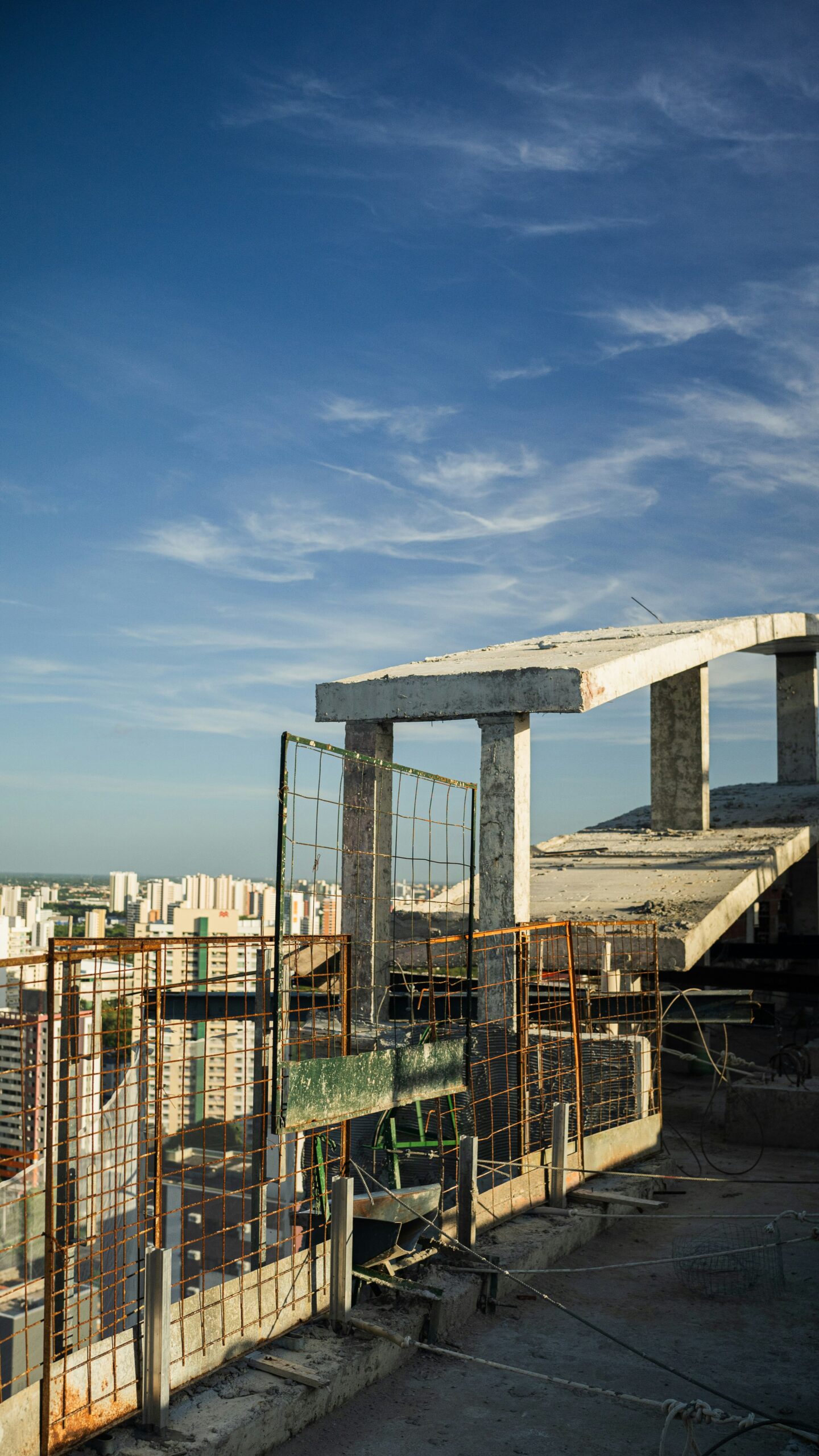Introduction to Garuda Construction IPO
The Garuda Construction IPO represents a significant opportunity for investors looking to capitalize on the growth trajectory of the Indian construction sector. Set to open on October 8 and conclude on October 10, this initial public offering is anticipated to garner considerable interest due to the company’s robust portfolio and strategic positioning within the industry. As India continues to witness rapid urbanization and infrastructure development, Garuda Construction aims to leverage these trends to enhance its market share and operational capacity.
Garuda Construction has established itself as a reputable player in the construction landscape, specializing in residential, commercial, and infrastructural projects. The offering serves not only as a means for the company to raise capital but also as a barometer of investor confidence in the construction sector’s recovery post-pandemic. Indicative of the industry’s potential, the IPO allows the company to fund its expansion plans, innovate its construction techniques, and improve its project delivery timelines.
In a broader context, this IPO is a pivotal moment for the Indian construction industry, which has been acknowledging the necessity for increased investment in infrastructure, housing, and sustainable development. The successful launch of Garuda Construction’s IPO may pave the way for more companies in the sector to follow suit, encouraging further investments and stimulating economic growth. Investors are advised to pay close attention to the details surrounding this offering, as it could signal emerging trends within the industry that impact future investment decisions. The timeline of October 8 to October 10 marks a crucial window for those looking to invest in this promising venture.
Overview of Garuda Construction
Garuda Construction has established itself as a prominent player within the civil construction sector, recognized for delivering comprehensive construction services across various domains. The company primarily specializes in civil engineering, infrastructure development, and project management, offering a robust portfolio that encompasses residential, commercial, and industrial projects.
Founded several years ago, Garuda Construction quickly gained traction due to its commitment to quality and innovation. The company has successfully executed numerous high-profile projects, showcasing its ability to handle complex construction needs while adhering to stringent timelines and regulatory requirements. This capacity has earned the firm a solid reputation among clients and industry peers alike, positioning it as a trusted partner in the construction landscape.
Garuda Construction offers a diverse range of civil construction services, including but not limited to site preparation, structural engineering, and landscape development. The company emphasizes sustainable construction practices, integrating eco-friendly methodologies into its projects. This approach not only enhances project performance but also aligns with increasing environmental demands from stakeholders and regulatory bodies.
The firm’s commitment to safety, quality assurance, and customer satisfaction further solidifies its market standing. Garuda Construction invests significantly in employee training and development, ensuring that its workforce is equipped with the latest skills and knowledge. This strategy not only enhances project quality but also contributes to a culture of safety and professionalism within the organization.
Overall, Garuda Construction plays a vital role within the broader construction industry, continually striving to innovate and excel. As the company prepares for its initial public offering (IPO), its established reputation for reliability and excellence positions it well for future growth and expanded market opportunities.
Market Context: Indian Construction Sector Growth
The Indian construction sector is on the verge of significant growth, with projections suggesting it will reach a remarkable value of Rs 6.49 lakh crore by FY30. This anticipated surge is driven by various influential factors, including robust government policies, rapid urbanization, and substantial infrastructural developments across the country. These elements are collectively shaping a conducive environment for major players in the construction industry, positioning them favorably for investments and expansions.
Government initiatives such as the National Infrastructure Pipeline (NIP) and the Smart Cities Mission are pivotal in driving this growth. The NIP aims to invest over Rs 100 lakh crore in infrastructure projects, spanning transportation, energy, and urban development. These projects create a ripple effect, enhancing demand within the construction sector while also generating employment opportunities. Furthermore, the government’s push towards digitization in the construction domain is fostering efficiency and promoting transparency, which are critical for attracting foreign investment.
Alongside government efforts, the trend toward urbanization is accelerating. The Deloitte India report highlights that approximately 600 million people will reside in urban areas by 2031. This urban migration creates an increased demand for residential, commercial, and industrial infrastructure, spurring activities within the construction sector. Furthermore, the growing middle-class population, with its rising disposable income, is leading to an upsurge in housing demand, further stimulating the market.
Additionally, the emphasis on sustainable construction practices and green building norms is influencing market dynamics. With an increasing awareness of environmental issues, both the public and private sectors are gradually adopting sustainable measures, which is likely to enhance the industry’s growth trajectory. Given these compelling factors, the Indian construction sector appears poised for an era of robust growth, setting a strong backdrop for Garuda Construction’s IPO. The interplay of these trends not only reflects the sector’s potential but also emphasizes the importance of strategic positioning for companies like Garuda.
IPO Details: Fresh Issue and Offer for Sale
The Garuda Construction IPO presents a unique opportunity for investors seeking to participate in the growing infrastructure sector. This public offering comprises two significant components: a fresh issue worth Rs 173 crore and an offer for sale (OFS) amounting to Rs 90 crore. The fresh issue represents newly created shares intended to raise capital that the company will utilize for various purposes, including debt repayment, expansion projects, and enhancing its operational capabilities. Such a commitment signals Garuda Construction’s intention to strengthen its financial position and foster growth.
On the other hand, the OFS component allows existing shareholders, including promoters and early investors, to liquidate a portion of their holdings in the company. The proceeds from the offer for sale will primarily benefit the selling shareholders rather than the company itself. Investors looking to engage with Garuda Construction during this IPO should consider this dual structure and evaluate its implications carefully.
Potential investors are encouraged to analyze the subscription options thoroughly. The IPO will present an opportunity to subscribe to the fresh issue as well as to purchase shares offered in the OFS. Understanding the proportion of shares allocated to each component can significantly influence investment decisions. Interest in IPOs generally leads to varied subscription rates, often dictated by market sentiment and the company’s growth potential.
In essence, the combination of a fresh issue and an OFS provides unique benefits and considerations. It allows Garuda Construction to bolster its capital resources while providing liquidity options for existing shareholders. Investors should monitor this IPO closely, particularly the subscription phases, and consider both their investment strategy and the broader market context before making decisions.
Understanding the Grey Market Premium (GMP)
The Grey Market Premium (GMP) is an important metric that provides insights into investor sentiment and expectations surrounding an Initial Public Offering (IPO). It represents the premium at which the shares of a newly listed company are traded in the unofficial market before their official listing on the stock exchange. This premium can serve as a valuable indicator of the potential performance of the stock once it becomes publicly available. A higher GMP often reflects strong demand from investors, which may drive the stock price up after it officially lists.
In the case of Garuda Construction’s IPO, the GMP has been observed at Rs 22, suggesting a 23% premium over the issue price. This figure is significant for potential investors as it indicates robust market enthusiasm and willingness to pay above the IPO price. Such a premium could indicate that investors are optimistic about the company’s future prospects, potentially leading to a favorable market response once the shares debut. It is essential for investors to consider GMP in conjunction with other factors, such as the company’s financial health, industry performance, and overall market conditions, when making their investment decisions.
Investors generally view a positive GMP as a good signal, often motivating them to participate in the IPO. However, one must exercise caution as the grey market is unregulated, and fluctuations in the GMP can occur due to various unpredictable market dynamics. It is prudent for investors to not solely rely on GMP assessments but to perform comprehensive due diligence before making investment decisions. A thorough understanding of the GMP can provide valuable strategic insights, perhaps leading to more informed investments in Garuda Construction’s IPO and similar opportunities in the future.
Investment Considerations for Potential Investors
As potential investors contemplate participation in the Garuda Construction IPO, several critical factors warrant thorough analysis. The company’s financial health is paramount; thus, reviewing its balance sheets, income statements, and cash flow reports provides insights into profitability and operational efficiency. Analyzing historical financial performance can help gauge the sustainability of earnings and overall fiscal stability. Investors should also evaluate the company’s debt levels in relation to its equity, as high debt can pose risks during economic downturns.
Market trends in the construction sector significantly impact the potential success of Garuda Construction. Understanding the current market landscape, including industry demand, competition, and regulatory environment, is essential. Investors should consider whether the firm is positioned well to adapt to shifts in consumer preferences or technological advancements within the construction field. Evaluating these external factors can yield a comprehensive view of the market’s future trajectory and, consequently, the company’s prospects.
Future growth projections of Garuda Construction need careful consideration as well. Investors should take stock of the firm’s strategic plans, including upcoming projects, geographic expansion, or diversification into new construction segments. These plans can provide insights into the potential for revenue growth and market share acquisition. Being aware of any partnerships or contracts with government entities and private organizations can also indicate the company’s capacity to secure ongoing work in a competitive landscape.
Risk evaluation is equally crucial when contemplating investments in an IPO. Understanding the inherent risks associated with construction businesses, such as project delays, cost overruns, and economic cycles, is vital. Additionally, identifying rewards, such as potential capital appreciation and dividend payments, helps in forming a balanced perspective. This thorough analysis of risks and rewards will equip investors to make informed decisions regarding their involvement in the Garuda Construction IPO.
Comparative Analysis: Garuda Construction vs Industry Peers
In evaluating Garuda Construction’s position within the Indian construction sector, a comparative analysis with prominent industry peers is instrumental. This examination encompasses various metrics, including financial performance, market share, and service diversification, which provide context to Garuda’s strengths and weaknesses. The Indian construction industry is characterized by a competitive landscape where firms such as L&T, Tata Projects, and Shapoorji Pallonji play significant roles.
Financial performance is a paramount metric to consider. Garuda Construction has demonstrated consistent revenue growth over the past few years, with an impressive increase in net profit margins. When compared with competitors, however, its margins trail slightly behind industry leaders like L&T, which has successfully leveraged scale and operational efficiencies to enhance profitability. Additionally, key financial ratios, such as return on equity and debt-to-equity, reflect Garuda’s solid but conservative approach to financing its operations. In contrast, some peers have adopted more aggressive growth strategies, resulting in higher leverage.
Market share also emerges as an essential factor in our comparison. Garuda Construction holds a modest share in the overall construction market, primarily focused on infrastructure and residential projects. This focus, while allowing for specialization, limits its competitive edge against larger firms that benefit from a diversified project portfolio. For example, Tata Projects engages in multiple domains, including urban infrastructure and industrial projects, providing it with resilience against market fluctuations and enhancing its market presence.
Service diversification is another critical aspect where Garuda Construction needs improvement. While it has anchored its services in construction, expansion into allied sectors, such as project management and consultancy, could bolster its market positioning. Many of Garuda’s competitors have successfully broadened their offerings, enabling them to capture a wider array of projects, thereby lowering their risk profile.
Overall, while Garuda Construction has established a commendable reputation, evaluating its performance against industry peers reveals pertinent areas for growth and the potential for strategic advancements.
Outlook for Garuda Construction
The outlook for Garuda Construction following its Initial Public Offering (IPO) appears to be promising, bolstered by a combination of robust growth strategies and significant market opportunities. As the construction industry continues to evolve, Garuda Construction is well-positioned to capitalize on emerging trends, particularly in sustainable building practices and infrastructural development. The company aims to enhance its competitive advantage through innovative construction technologies, which can streamline operations and reduce costs, ultimately leading to increased profit margins.
One of the primary growth strategies involves expanding their project portfolio across various sectors such as residential, commercial, and infrastructure projects. The government’s focus on improving infrastructure and urban development bodes well for Garuda Construction, as it can result in a higher volume of contracts and partnerships. Additionally, the firm’s commitment to sustainability aligns with market demands, as clients increasingly prioritize environmentally friendly solutions. By leveraging these trends, Garuda Construction aims to not only grow its revenues but also strengthen its market position.
However, Garuda Construction may encounter several challenges that could impact its growth trajectory. The volatility of raw material prices can affect project budgets and timelines, posing risks to profitability. Furthermore, competition within the construction sector remains fierce, with numerous players vying for market share. The ability to maintain high-quality standards while managing costs will be crucial for the company’s sustained success. Labor shortages, particularly in skilled positions, can also hinder project execution and lead to delays, necessitating a strategic approach to workforce management.
In conclusion, while Garuda Construction faces certain challenges, its proactive strategies and responsiveness to market opportunities position it favorably for future growth in the post-IPO landscape. Investors should remain mindful of these dynamics as they consider the long-term implications of their investment in the company.
Conclusion: Final Thoughts on the Garuda Construction IPO
The Garuda Construction IPO has garnered significant attention in recent months, reflecting the growing investor interest in the Indian construction sector. As we have discussed, this initial public offering presents an opportunity for investors to participate in the expansion of a company that is poised to benefit from a recovering economy and increased infrastructure spending. The construction industry in India is entering a phase of renewed growth, driven by government initiatives and a demand for housing and commercial spaces.
Throughout this blog post, we have explored the fundamentals of the Garuda Construction IPO, including its financial health, growth prospects, and market positioning. The company’s track record of successful projects and its strategic focus on sustainable building practices set it apart in a competitive landscape. Furthermore, the comprehensive assessment of the IPO’s pricing and valuation suggests that it may present a compelling opportunity for investors looking to diversify their portfolios.
It is essential to consider the risks associated with investing in the construction sector, including fluctuations in material costs, regulatory challenges, and potential delays in project completions. However, the long-term outlook for Garuda Construction, coupled with India’s burgeoning infrastructure needs, positions it favorably in terms of potential returns. By aligning investments with sectors that are undergoing transformation, investors can enhance their chances of capitalizing on future growth.
Overall, the Garuda Construction IPO signifies more than just a new stock option; it reflects the resilience and potential of the construction industry in India. With careful evaluation and strategic investment, stakeholders can harness the benefits that this IPO may afford, contributing positively to their investment portfolios while supporting the ongoing development of vital infrastructure. As the company moves forward, continued monitoring of its performance and market dynamics will be crucial for maximizing investment outcomes.


